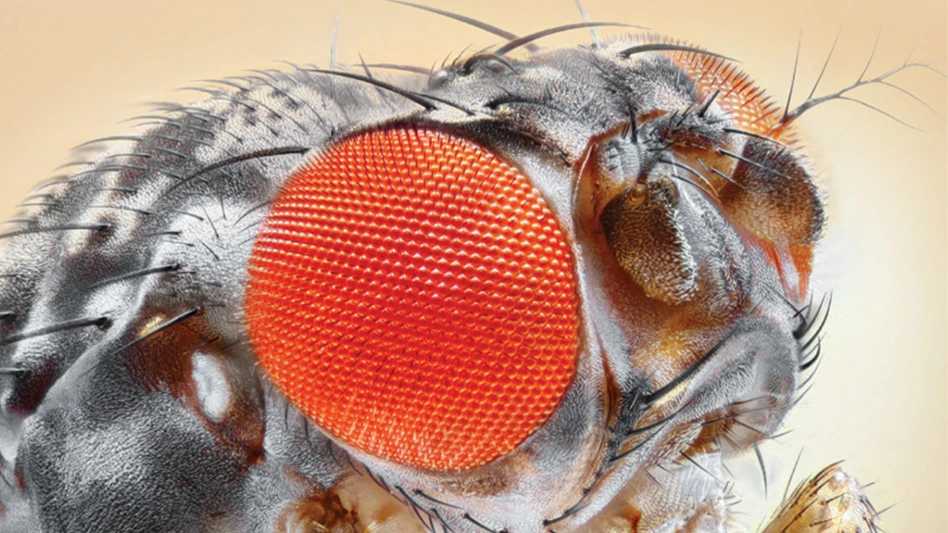
Stored product pests (SPP) can contaminate stored foods; cause increases in temperature, moisture, fatty acids, uric acids and molds; and decrease weight, all of which can result in economic loss, regulatory penalties, customer rejection and adverse consumer reaction. But the insects are often difficult to detect until populations build because of their small size and ability to live, feed and breed within the product itself or in small cracks and crevices. They also are difficult to control because of their high reproduction rates, mobility and ability to survive on very small amounts of food, such as residues and fines in trucks, bins and equipment. But new technologies are continually being developed for SPP detection, prevention and elimination. Following are some of the most prominent:
DIGITAL DETECTION. This technology began with rodents and is now moving into the realm of SPPs. Electronic pest detection systems come in many forms, but the basic premise is that of detection, notification and data collection. A sensor installed in a trap is triggered by touch or movement. A signal is relayed to the system hub, and a capture alert is sent to a specified device (e.g., of the pest control technician or plant associate). Capture data is stored and provides a historical map of pest activity.
“New technology always starts somewhere, and when that technology starts to provide value, we start to see it branch out,” said Bayer Environmental Science Technical Service Lead Joe Barile. Such is the case with digital monitoring. It began with rodents because the hardware and technology were there. But now, he said, “The ice has been broken.” When he was introduced to the technology, “one of the first things I thought of was stored product pests because of the complexity of gathering information,” Barile said. SPP monitoring requires a lot of work in putting the traps in place, and checking and swapping them out regularly.
When digital monitoring is combined with automatic visual monitoring, the potential for detection is even greater. These sticky traps have cameras that take photos at specified intervals built into them. Rather than simply denoting the entry of a pest, these traps aid in insect identification and in determining the size of an infestation.
Analysis of captured insects also can provide a “heat map” of insect counts in the facility, indicating where hot spots are located and where inspection time should be spent. “You don’t have to count and analyze it yourself, you can know where to focus,” said Insects Limited Vice President Tom Mueller. For example, SPPs may be gathering where product has been spilled, a machine that was turned off has infested debris, etc. Such information not only helps track the source of the problem, it can shorten the time of action, enabling proactive prevention rather than reaction, and reducing recalls, Barile said. “We can intercept problems if we have this type of information out there.” Monitoring also frees up time for pest control technicians. Rather than spending time manually counting insect species in traps, they can be inspecting the facility, making recommendations for problem areas to provide for prevention rather than reaction.
However, FSMA’s preventive controls requirements can pose a downside for digital monitoring. “If you are aware of insect presence, when and how you address it could take you out of compliance,” said Trécé Market Manager James Miller. For example, if a technician determines that a count of insects of which he is notified is not significant, he could decide to wait until his next service. But a federal inspector or third-party auditor could see it differently. This same issue exists with rodent digital monitoring, he said, “And we won’t find out until they start enforcement.”
False positives also can cause issues, as technicians will not know a notification is not a capture until they arrive at the facility. But even with the negatives, Miller sees the compiled data as improving Integrated Pest Management (IPM), with the value being “how well you use that to better your food safety program to reduce your risk of stored product pest infestation.”
Knowledge attained through the monitoring can be further enhanced with smartphone apps that are being developed for pest identification, Mueller said. “You won’t have to gather a specimen and send it to an entomologist as much as in the past.” Integrating these with other technologies, such as routing, can enable a technician to get updates and review a facility’s history and be completely informed at each visit.
Though still in testing, camera monitors, which are implanted into traps, could be beneficial, but the cost may be prohibitive. However, in particularly sensitive areas or high-risk applications, the value could be worthwhile, said USDA ARS Research Entomologist Jim Campbell. Advantages would include the ability to monitor hard-to-reach traps, get data in near real-time, providing for more proactive prevention and being able to place traps in hard-to-reach areas without worrying about worker safety in accessing them.
INSECT LURES. To enable wider insect capture, multi-lure traps are becoming more prevalent and versatile as technology enabling attraction of up to 32 species of stored product beetles has become almost mainstream, Miller said.
Although multi-lure traps are not really new, more people are asking for and talking about them, Mueller said. Pre-loaded traps also are becoming more readily available, he said. A technician just opens the trap and sets it out. Care needs to be taken with these, however, because there can be a difference in quality and/or quantity of lure. “So with ease of use, there may be a little sacrifice in quality.”
Mating disruption, though currently available only for the Indian Meal Moth, is another area to which food processors are becoming more acclimated, Mueller said, noting that this used to be seen as an added cost.
But, with FSMA’s increased prevention, facilities have become more willing to spend money in this area, as the pheromone attractants are being seen as ways to monitor, predict and prevent future infestations.
WHAT’S AHEAD? While system-wide linkage and cost are current barriers to complete integration of some technologies, such as digital detection, these new products, as well as traps and lures, are constantly evolving. And that evolution is benefitting food-processing facilities by enabling the pest control industry to provide the service that is promised. Rather than spending time at a facility checking traps and counting insects to gather data, the data is collected for them, and they can arrive at the facility ready to provide further inspection or recommendations, handle issues or proactively enhance prevention efforts.Additionally, Campbell expects that digital technology will continue becoming smaller and less expensive, bringing the cost of implementation down as well. “I think it’s really an exciting technology and, eventually, will be the way we go,” he said.
Expressing similar sentiments, Barile said, “I’m really excited about this. It’s long in coming. There is some resistance — but remember when cell phones first came in,” he said. “After 40 years in the business talking about IPM, I think these will validate the pest control industry as being IPM-focused. Stored product pest application is a slam dunk; it fits the FSMA support requirements that we’re all involved with.”
This article appeared in the November/December issue of Quality Assurance & Food Safety magazine, a sister publication to PCT.

Explore the January 2020 Issue
Check out more from this issue and find your next story to read.
Latest from Pest Control Technology
- A&C Pest Management Wins Best of Long Island Award
- Certus Promotes Rezk to Chief Marketing Officer
- Forty-Seven Percent of PCOs Increased Mental Health Care Benefits, Poll Finds
- Samantha Malone on Growing Confidence, Building Relationships Through ELP
- Surge in Pest Populations Expected This Spring, NPMA Bug Barometer Finds
- CoverAll Pests Celebrates 10 Years in Business
- ICUP 2025 Program Announced
- Aedes Mosquito Killers Now Available in the U.S.





